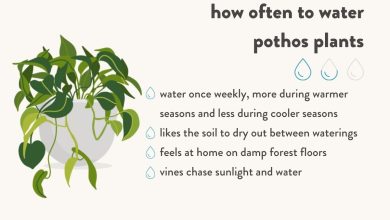Parsley Pests and Diseases: Complete Guide with Photos
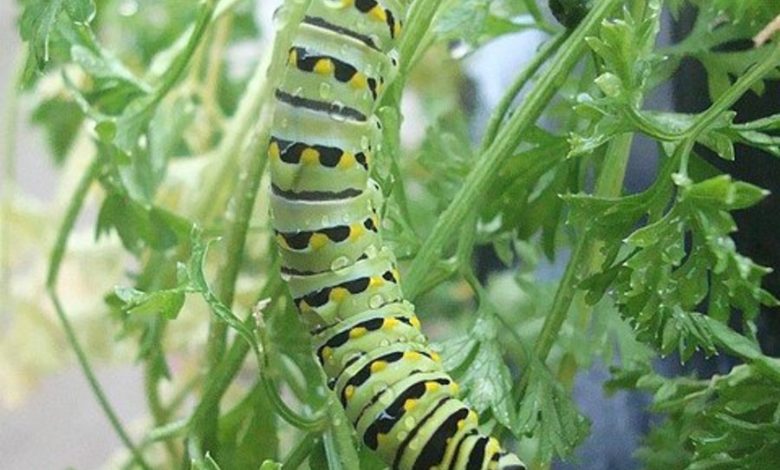
Hello to all agrohuerters! Since in the previous article we talked about how to grow parsley, today we will focus on identifying and controlling its main pests and diseases. Parsley, known in the scientific world as Petroselinum crispum, comes from the Greek Petrol, which means rock or stone, due to the rocky soils where this plant used to grow.
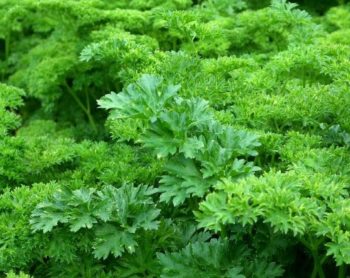
1. Parsley diseases
Parsley white spots: powdery mildew
This fungus appears in the form of white spots and gradually transforms into a grayish-white powder. Thanks to that white powder, it is one of the easiest mushrooms to spot. It normally develops on the upper surface of the leaves, although it can also spread along the stem or the fruits. Their presence hinders photosynthesis. If we do not control it well, the leaves turn yellow and can dry out.
Humidity and warm temperatures are the ideal conditions for powdery mildew to appear in our garden.
I leave you an article where we talk about how to control powdery mildew.
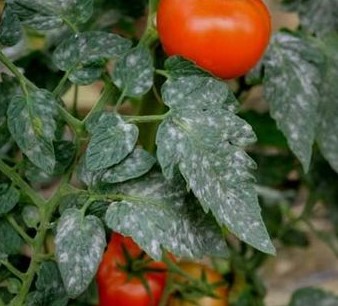
Mildew on parsley: brown spots
Another fungus that affects parsley is mildew. It produces greasy-looking spots of different shades on the leaves, which then turn brown and wither.
Alternaria in parsley
Alternaria is a fungus that causes significant losses in agriculture. It is estimated that they are the cause of 20% of the losses.
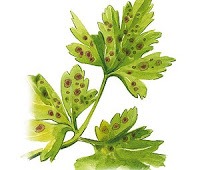
Other fungal diseases: septoria and cercosporiosis
As in the previous cases, these are fungal diseases. In addition, they are the most important foliar diseases that affect this plant. They are caused by Septoria petroselini and Cercospora petroselini. In the first case, septoria causes dark spots on the leaves. On the other hand, in the case of cercosporiosis, the broad ones are light gray in color, with very well defined margins.
To treat this type of fungal diseases in an ecological way, here are a couple of very interesting links: « 6 ecological fungicides for the garden » « 5 natural remedies against pests and diseases «.
2. Pests on parsley
Green bugs in parsley: aphids
Aphids, as we have seen in other articles, are one of the most common pests in orchards and gardens. They are small in size (1-3 mm in length) and can have different colors depending on the species to which they belong.
They attack the young shoots of crops with a high sugar content. The larvae cause damage by making galleries in the leaves of plants. As for adults, they feed by sucking sap from leaves, buds and young shoots using the stylet of their mouthparts.
In addition, they excrete a sticky, sugary liquid called honeydew that attracts ants. They favor the appearance of a fungus known as bold and can also transmit viruses from one plant to another.
In the following image you can see a leaf of parsley with aphids.
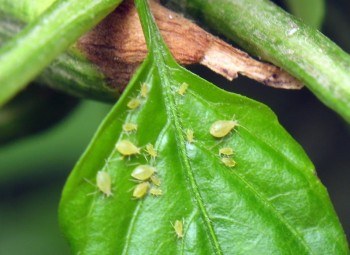
celery fly
The celery fly, whose scientific name is Phylophylla heraclei L., can also affect parsley, although it is not very common in the Mediterranean area. Mainly, the greatest damage is caused by its larvae since they are miners of the parenchyma of the leaves (that is, they carry out small zig-zig paths through the leaf part). The worst thing about this is that they decrease the commercial value of parsley.
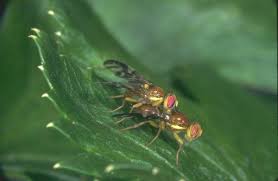
whitefly on parsley
Parsley does not get rid of whiteflies either. These are usually located on the underside of the leaves. They like humidity and high temperatures, so they are a frequent pest in spring and summer (and very dangerous in greenhouses).
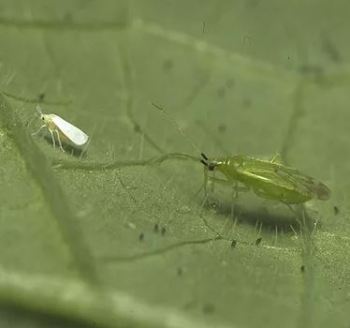
The main damages they cause to crops are:
- Extraction of sap from the plant.
- mechanical damage
- They produce molasses.
- Some species are disease vectors.
The best control method is prevention. Therefore, it is important that you check the underside of the leaves from time to time in order to act as soon as possible. In addition, there are various methods of whitefly control such as chromatic traps, natural predators, infusion of wormwood, garlic, etc.
References
- Perring, T. (2001).The Bemisia tabaci species complex. Crop Protection. 20(9), 725-737.
- Faria, M., Wraight, S. Biological control of Bemisia tabaci with fungi. Crop Protection. 20(9), 2001, 767-778.
- Simon, JC, & Peccoud, J. (2018).Rapid evolution of aphid pests in agricultural environments. Current Opinion in Insect Science, 26, 17–24.
This is all for today, I hope you liked it and, as always, you can leave us your experiences in the comments. If you are interested in a specific topic you can ask us to write an article about it.
Have a nice day!




